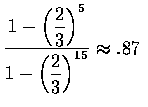The Gambler's Ruin Problem 賭徒破產
- Example (The Gambler's Ruin)
- Two gamblers, A and B, bet on the outcomes of successive flips of a coin. On
each flip, if the coin comes up heads, A collects 1 unit from B, whereas, if it
comes up tails, A pays 1 unit to B. They continue to de this until one of them
runs out of money. If it is assumed that the successive flips of the coin are
independent and each flip results in a head with probability p, what is the
probability that A ends up with all the money if he starts with i units and
B starts with N-i units?
- Solution:
- Let E denote the event that A ends up with all the money when he starts with
i and B with N-i, and to make clear the dependence on the initial fortune
of A, let Pi=P(E). We shall obtain an expression for P(E) by conditioning
on the outcome of the first flip as follows: Let H denote the event that the
first flip lands heads; then
Now, given that the first flip lands heads, the situation after the first bet
is that A has i+1 units and B has N-(i+1). Since the successive flips are
assumed to be independent with a common probability p of heads, it follows
that, from that point on, A's probability of winning all the money is exactly
the same as if the game were just starting with A having an initial fortune of
i+1 and B having an initial fortune of N-(i+1). Therefore,
P(E|H)=Pi+1 and similarly,
P(E|Hc)=Pi-1
Hence, letting q=1-p, we obtain
By making use of the obvious boundary conditions P0=0 and PN=1, we shall
now solve Equation (4.2). Since p+q=1, these equations are equivalent to
Hence, since P0=0, we obtain from Equation (4.3):
Adding the first i-1 of Equation (4.4) yields
Now, using the fact that PN=1, we obtain
and hence
Let Qi denote the probability that B winds up with all the money when A
starts with i and B with N-i. Then, by symmetry with the situation described
and on replacing p by q and i by N-i, we see that
Moreover, since
 is equivalent to
is equivalent to
 ,
we
have when
,
we
have when
 ,
As this result also holds when
,
As this result also holds when
 ,
we see that
Pi+Qi=1
,
we see that
Pi+Qi=1
In words this equation states that with probability 1 either A or B will wind
up with all of the money; or, in other words, the probability that the game
continues indefinitely with A's fortune always being between 1 and N-1 is
zero. (The reader must be careful because, a priori, there are three possible
outcomes of this gambling game, not two. Either A wins or B wins or it goes on
forever with nobody winning. We have just shown that this last event has
probability 0.)
As a numerical illustration of the above result, if A were to start with 5 units
and B with 10, then the probability of A's winning would be
 if p were
if p were
 ,
whereas it would jump to
if p were .6.
,
whereas it would jump to
if p were .6.
![$\rule[0.02em]{1.0mm}{1.5mm}$](img17.gif)


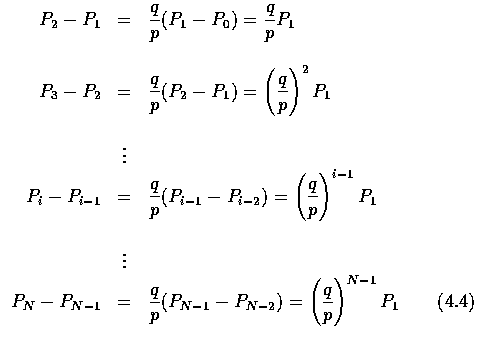

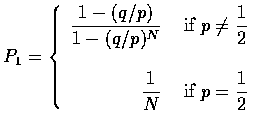
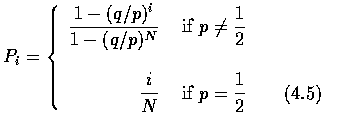
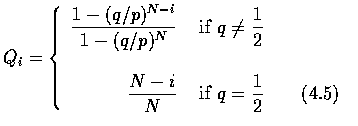
 is equivalent to
is equivalent to
 ,
we
have when
,
we
have when
 ,
,
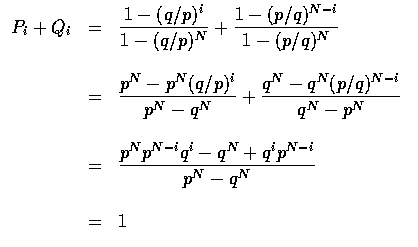
 ,
we see that
Pi+Qi=1
,
we see that
Pi+Qi=1 